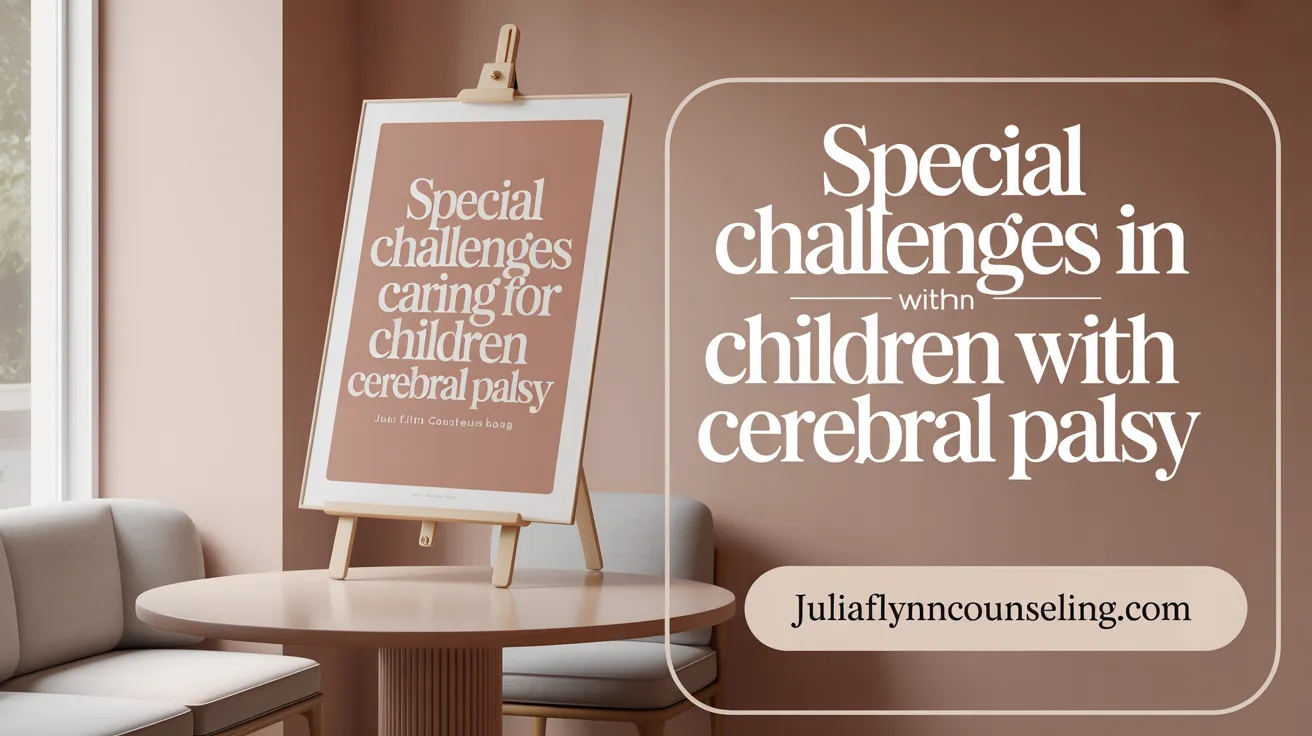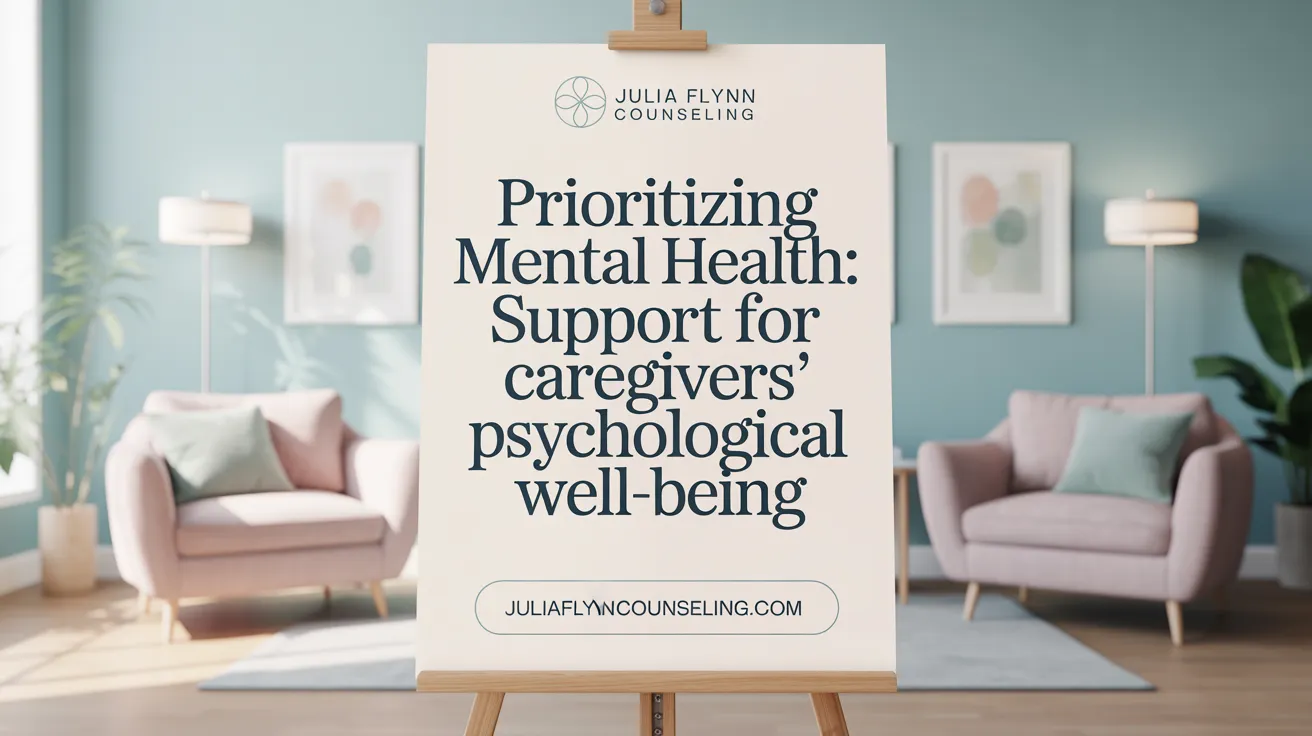The Hidden Struggles Behind Disabled Child Care
Families caring for children with disabilities face unique challenges that significantly impact their physical, emotional, and financial well-being. This article explores comprehensive statistical data and research findings that illuminate the caregiver burden, explores access to support systems, highlights health implications including chronic pain, and suggests policy responses aimed at enhancing support for this vital group.
Key Statistical Insights on Caregiver Burden in Families of Disabled Children

What are the key statistical data and research findings on caregiver burden for families of children with disabilities?
Research shows that families caring for children with disabilities face considerable challenges, impacting their emotional, physical, and financial well-being. One significant statistic is that 25.5% of caregivers experience chronic non-cancer pain, which is substantially higher among those with high caregiving burden. Factors such as obesity, existing health conditions, and mental health diagnoses increase the likelihood of chronic pain.
The severity of the child's illness also correlates with caregiver strain. Specifically, children with more severe disabilities — measured by the Gross Motor Function Classification System (GMFCS) — require more assistance, leading to increased caregiver stress.
Emotional health plays a vital role, with depression and anxiety directly linked to higher burden levels. More than half of mothers caring for children with special needs report at least mild to moderate caregiving stress. These stress levels are often associated with socioeconomic status and the intensity of caregiving duties.
In addition to emotional impact, physical health issues are common among caregivers. The prevalence of caregiver-related physical ailments includes fatigue and pain, exacerbated by long hours and high demands.
Furthermore, caregivers of children with mental or behavioral diagnoses face even higher odds of experiencing chronic pain — up to 39% more than those caring for children without such diagnoses.
Overall, these findings highlight the importance of providing targeted support, such as mental health services, respite care, and health management programs. Addressing these areas can help reduce the burden on families and improve health outcomes for both children and their caregivers.
Support Systems and Resources Available to Caregivers of Disabled Children
 Caregivers of children with disabilities can access a variety of support systems and resources designed to ease their responsibilities and improve their quality of life. These resources encompass educational programs, financial assistance, training initiatives, community-based services, and respite care.
Caregivers of children with disabilities can access a variety of support systems and resources designed to ease their responsibilities and improve their quality of life. These resources encompass educational programs, financial assistance, training initiatives, community-based services, and respite care.
Educational Support: One of the critical provisions is special education services and early intervention programs. In the United States, the Individuals with Disabilities Education Act (IDEA) guarantees free and appropriate public education tailored to children’s unique needs. These educational services help children develop skills in a supportive environment, reducing caregiver stress related to their child's schooling.
Financial Aid Options: Financial support plays a vital role. Programs such as Supplemental Security Income (SSI) provide cash benefits to eligible families. Medicaid offers home and community-based services that support medical needs, while some states have specific paid caregiver programs that help cover the costs of ongoing care.
Caregiver Training Initiatives: Recognizing the importance of proper caregiving skills, many organizations offer training programs. The World Health Organization’s Caregivers Skills Training equips caregivers with practical skills for daily care tasks and managing behavioral issues. Parent Training Centers also support families in learning effective strategies for managing their child's condition.
Community-Based Support Services: Local support groups and community programs foster social connections and emotional support. These services include peer support groups, community health clinics, and specialized services for veteran caregivers. Such networks provide essential emotional relief and practical advice.
Respite Care Availability: One of the most valued support resources is respite care—temporary relief services that allow caregivers to rest or attend to personal needs. Respite care can be provided at home, through community centers, or in specialized facilities, ensuring caregivers can maintain their well-being over time.
Overall, these comprehensive support systems and resources are vital in helping caregivers manage their responsibilities more effectively, reducing stress, and fostering better outcomes for children with disabilities.
Challenges and Health Implications for Caregivers

What are the main challenges faced by caregivers of children with disabilities, including health implications such as chronic pain?
Caregivers of children with disabilities encounter a range of challenges that can profoundly affect their physical and mental health. Many caregivers report experiencing persistent physical issues such as chronic pain, fatigue, musculoskeletal problems, and sleep disturbances. These physical ailments are often the result of the demanding nature of caregiving activities, which can include lifting, constant supervision, and managing complex medical routines.
Emotionally, caregivers often face elevated levels of stress, depression, and anxiety. Feelings of guilt, emotional exhaustion, and burnout are common, particularly when caregiver support is limited or when the child's needs are more severe. These emotional burdens can sometimes lead to serious mental health issues, including suicidal thoughts in extreme cases.
Social isolation and stigma further worsen these challenges. Caregivers may withdraw from social activities and community engagement due to the demands of caregiving or societal attitudes towards disabilities. This social marginalization can diminish access to resources and support networks, amplifying feelings of loneliness.
The combination of physical strain, emotional stress, and social isolation significantly increases the risk of developing chronic stress-related diseases. Caregivers are more susceptible to conditions such as heart disease, diabetes, hypertension, and migraines. The physical and psychological toll underscores the importance of comprehensive support systems, mental health services, and targeted interventions to help caregivers manage their well-being effectively.
Ensuring caregiver health requires recognizing these multifaceted challenges and providing accessible resources, including respite care, mental health counseling, and community support, to improve their quality of life and sustain their vital caregiving roles.
Caregiver Stress, Workload and Work-Life Balance: Impact on Health

How do caregiver stress, workload, and work-life balance issues impact the health of caregivers for children with disabilities?
Caregivers of children with disabilities often carry a heavy emotional and physical burden. This stress is linked to a range of health problems, including increased fatigue, chronic pain, and cardiovascular issues such as high blood pressure. Studies indicate that caregivers face heightened risks of mental health conditions like depression and anxiety, which are common among those providing long-term support for children with more severe disabilities.
The workload associated with caring for children with complex needs requires constant attention and support. This often results in sleep deprivation and reduced time for self-care, leading to
Factors Influencing Caregiver Burden and Effective Support Strategies

What factors influence caregiver burden and what strategies can be employed to support caregivers effectively?
Caregivers of children with disabilities, such as cerebral palsy, face a multitude of challenges that contribute to their overall burden. The severity of the child's condition plays a pivotal role. For example, higher levels of disability, especially as classified by the Gross Motor Function Classification System (GMFCS), are associated with increased caregiver burden. Children with more severe disabilities require more assistance in daily activities, intensifying the demands placed on caregivers.
In addition to functional severity, neuropsychiatric symptoms like behavioral issues, depression, and anxiety in children further elevate caregiver stress levels. These behavioral symptoms demand extra support efforts, which can be overwhelming for caregivers without sufficient resources or training.
Caregiver characteristics such as age, gender, health status, and socioeconomic background significantly influence burden levels. For instance, caregivers who experience fatigue, have low income, or are mothers often report higher stress. Furthermore, caregivers experiencing poor physical or mental health, including depression and fatigue, face greater challenges and are more prone to adverse health outcomes.
Social support emerges as a critical factor. Social connections and community resources can buffer the effects of burden. Caregivers with strong social networks often report better physical and psychological well-being. Training programs, such as caregiving skills workshops and mental health counseling, address specific stressors, including managing neuropsychiatric symptoms and reducing feelings of guilt or guilt.
Interventions like respite care provide temporary relief, enabling caregivers to recuperate physically and emotionally. Counseling services target mental health needs, alleviating symptoms of depression and anxiety. Moreover, organizational policies that foster supportive work-family environments can improve work-life balance, especially for employed caregivers.
Summarizing, factors influencing caregiver burden include the child's disability severity and behavioral symptoms, as well as caregiver demographics and health. Effective strategies encompass personalized training, mental health support, respite services, and community engagement. Integrating these approaches addresses individual needs, mitigates stress, and enhances overall caregiver well-being.
| Factors Influencing Burden | Examples | Support Strategies |
|---|---|---|
| Child's disability severity and behavioral symptoms | GMFCS level, neuropsychiatric issues | Caregiving skills training, behavioral management programs |
| Caregiver demographics and health status | Age, gender, fatigue, depression, low income | Counseling, health support, community resources |
| Social support and organizational support | Family networks, workplace policies | Support groups, respite care, supportive workplace policies |
Understanding these interconnected factors and adopting comprehensive intervention measures can significantly reduce caregiver burden, leading to better support for both caregivers and children with disabilities.
The Unique Burden of Caregiving for Children with Cerebral Palsy

What specific data exists regarding caregiving for children with cerebral palsy?
Research highlights the multiple challenges encountered by caregivers of children with cerebral palsy (CP). These caregivers typically face extensive physical and emotional burdens. Many report musculoskeletal pain from assisting with daily activities and emotional distress such as depression, anxiety, and guilt. Social withdrawal and feelings of isolation are common, particularly when support networks are weak.
Financial stress is a significant concern, driven by high medical expenses, limited access to healthcare, and reduced opportunities for gainful employment. Studies indicate that many caregivers struggle with inadequate social support and experience societal stigma, which adds to their stress.
The severity of the child's condition, often measured by the Gross Motor Function Classification System (GMFCS), correlates with caregiver burden. Children with more severe disabilities demand more assistance, intensifying the physical and emotional toll on caregivers.
Data from various countries reveal that caregivers often endure long hours of caregiving, leading to fatigue and deteriorating health. Mental health issues such as depression are prevalent, with moderate evidence suggesting that psychological support can reduce caregiver burden.
In summary, caregiving for children with CP is fraught with layered challenges. Addressing these requires comprehensive support systems, inclusive policies, and community-based interventions to improve the quality of life for both caregivers and children.
Demographic and Socioeconomic Influences on Caregiver Burden

How do gender, education, and income affect caregiver burden?
Caregiver burden tends to be higher among women, with women significantly more likely to be caregivers and report increased stress levels compared to men. Higher education levels, such as post-high school education, are associated with a slight reduction in burden, possibly due to better access to resources and coping strategies. Income also plays a vital role; caregivers with higher income can often access additional support and services, reducing their burden. Conversely, lower socioeconomic status often correlates with greater stress, fatigue, and financial hardship.
What role does caregiver age and relationship to the child play?
Younger caregivers and parents, especially mothers, typically experience moderate to high levels of burden and stress. Mothers, in particular, perceive moderate caregiving burden and emotional stress, which is positively linked with feelings of anxiety and depression. The age of the caregiver influences their resilience and capacity to cope; older caregivers might face compounded health challenges, adding to their burden.
How does caring for multiple disabled children influence burden?
Having more than one disabled child significantly increases caregiver responsibilities, leading to higher levels of fatigue, emotional distress, and social isolation. Caregivers of multiple children with disabilities often report a greater need for support and face increased challenges in managing their children's diverse health and developmental needs.
Are there geographic and cultural considerations?
Caregiver experiences vary across regions and cultures. In some areas, caregivers face additional hurdles due to limited access to healthcare, social support networks, and educational resources. Cultural norms influencing family roles and expectations can either heighten or mitigate caregiver stress. For example, in certain communities, caregiving is considered a familial duty, which may provide social support but also impose pressure and stigma.
| Factor | Impact on Caregiver Burden | Additional Notes |
|---|---|---|
| Gender | Women face higher burden | More likely to be primary caregivers |
| Education | Higher education may reduce burden | Facilitates access to resources |
| Income | Low income increases burden | Limits access to supportive services |
| Caregiver Age | Younger or older age influences burden | Younger caregivers may lack experience, older may face health issues |
| Relationship | Mothers especially vulnerable | Emotional and financial stress heightened |
| Number of Children | Multiple children increase burden | Greater caregiving responsibilities |
| Cultural & Geographic | Varies by region | Affects access and social expectations |
Understanding these factors helps tailor support programs to reduce stress and improve the well-being of caregivers caring for children with disabilities.
Mental Health Challenges Among Caregivers and Importance of Psychological Support

What is the prevalence of depression, anxiety, and guilt among caregivers?
Caregivers of children with disabilities, including cerebral palsy, frequently experience mental health challenges such as depression, anxiety, and guilt. Studies show that a significant proportion of these caregivers report moderate to severe levels of depression and anxiety, which further exacerbate their overall burden.
How is mental health linked to caregiver burden?
There is a clear connection between poor mental health and increased caregiver burden. Caregivers experiencing depression or anxiety tend to report higher levels of stress and fatigue, making caregiving tasks more difficult to manage. This bidirectional relationship underscores the importance of addressing mental health to help alleviate overall caregiver burden.
What are the benefits of counseling and therapy?
Engaging in counseling and therapy can significantly benefit caregivers by providing emotional support, developing coping skills, and reducing feelings of depression and anxiety. Mental health interventions can improve caregivers' resilience, enabling them to better handle the demands of caregiving and improve their quality of life.
How do mindfulness and coping mechanisms help?
Mindfulness practices and coping strategies such as cognitive-behavioral techniques, meditation, and support groups offer valuable tools for caregivers to manage stress effectively. These approaches foster emotional regulation, decrease perceived burden, and promote a sense of well-being.
Caregivers’ mental health deeply impacts their ability to provide care and maintain personal well-being. Supporting mental health through counseling, therapy, and mindfulness can result in better outcomes for both caregivers and the children they care for, highlighting the need for integrated mental health services in caregiver support programs.
Chronic Non-Cancer Pain and Physical Health Risks in Caregivers
What is the prevalence and what are the risk factors for chronic non-cancer pain (CNCP) among caregivers?
Caregivers of children with special healthcare needs face significant health challenges, including a higher prevalence of chronic non-cancer pain (CNCP). Studies show that about 25.5% of these caregivers experience CNCP, which is notably higher compared to those with lower caregiving burden. Risk factors for developing CNCP include obesity, experiencing disability oneself, having a mental health diagnosis, and being unemployed.
How is CNCP associated with caregiver burden levels?
Research indicates a strong link between the level of caregiver burden and the likelihood of experiencing CNCP. Caregivers with high burden are 1.29 times more likely to suffer from CNCP than those with lower levels of burden. This suggests that the physical health of caregivers deteriorates as their caregiving responsibilities become more overwhelming.
What impact do factors like obesity, disability, and unemployment have?
Certain personal health and socioeconomic factors amplify the risk of CNCP. Obesity can contribute to musculoskeletal issues, while disabilities and unemployment can increase physical strain and stress levels, exacerbating pain conditions. Caregivers with these factors often face compounded physical health risks, which further hinder their ability to provide care.
What is the relationship between child’s mental health disorders and CNCP?
Caregivers caring for children with mental or behavioral health disorders have nearly 1.39 times higher odds of experiencing CNCP. The emotional strain and increased caregiving demands associated with managing mental health issues in children significantly influence caregivers’ physical health, intensifying their risk for chronic pain.
| Factors | Increased Odds of CNCP | Explanation |
|---|---|---|
| High caregiver burden | OR 1.29 | Higher stress and physical strain contribute to pain experiences |
| Obesity | Increased likelihood | Contributes to musculoskeletal and joint pain |
| Experiencing disability | Higher risk | Personal health limitations add to physical stress |
| Unemployment | Elevated risk | Economic stress and reduced access to healthcare may worsen pain |
| Child’s mental disorder | AOR 1.39 | Emotional and physical stress from caregiving for behavioral disorders |
Understanding these interconnected factors highlights the importance of holistic support approaches. Addressing physical health, mental well-being, and socioeconomic challenges is essential to reducing CNCP risk among caregivers.
Workplace Support and Policy: Enhancing Caregiver Work-Life Balance
What role do organizational culture and managerial support play in reducing caregiver burden?
A supportive organizational culture can significantly alleviate the strain faced by caregivers of children with disabilities. When managers demonstrate understanding and provide flexible work arrangements, caregivers experience less stress and improved work-life balance. Supportive management practices, such as offering flexible hours or remote work options, create an environment where caregivers feel valued and accommodated.
How do paid leave and workplace flexibility impact caregiver well-being?
Paid leave policies enable caregivers to attend to their children's needs without the added stress of financial insecurity. Flexibility in work hours or the possibility of telecommuting helps caregivers manage daily caregiving responsibilities alongside professional obligations. These practices reduce burnout, improve mental health, and allow caregivers to maintain employment while caring for their children.
What are the consequences of time demands and career limitations for caregivers?
Intense time commitments and fear of career stagnation can increase feelings of burden and frustration among caregivers. Heavy work demands may lead to fatigue and decreased job satisfaction. Organizations that acknowledge these challenges by implementing supportive policies can mitigate negative outcomes, enabling caregivers to sustain employment and fulfill their caregiving roles.
What positive effects can workplace interventions have on caregiver stress?
Interventions such as caregiver support programs, counseling services, and peer networks foster resilience among working caregivers. When employers actively provide resources and promote a caregiver-friendly environment, employees report lower stress levels, better mental health, and higher job engagement. These benefits extend beyond individual well-being, positively influencing organizational productivity and morale.
Effective policy recommendations and resources for caregiver support
Effective strategies to reduce caregiver burden include increasing financial aid via government grants or stipends and expanding insurance coverage tailored to caregiving needs.
Healthcare integration, such as caregiver assessments and involvement in care plans, enhances coordination and reduces emotional strain.
Community programs—like respite care, support groups, and educational workshops—offer crucial emotional and practical assistance.
Digital platforms and telehealth services increasingly provide accessible support, particularly for remote or underserved populations.
Legislation such as the RAISE Act and Medicaid expansions underpin broad policy efforts to improve access.
Workplaces can implement paid family leave policies and flexible scheduling to support employee caregivers.
Combining these approaches with advocacy and cross-sector collaboration leads to comprehensive systems that effectively ease caregiver burden and broaden resource access.
Prevalence and Characteristics of Children with Special Health Care Needs in the U.S.
How Many Children Are Affected by Special Health Care Needs?
In the United States, over 20% of children, which equates to more than 14.5 million, have some form of special health care need. These needs can include physical disabilities, developmental delays, behavioral issues, or emotional conditions that require additional support.
What Are the Most Common Disabilities?
Children with special needs often face conditions like autism, ADHD, depression, or anxiety. Among children receiving special education services, common disabilities include specific learning disabilities (32%), speech or language impairments (19%), other health impairments such as asthma, diabetes, or epilepsy (15%), and autism (13%).
How Do Healthcare Access and Insurance Look?
Access to healthcare remains a challenge for many. Less than two-thirds (67%) of children with special needs have adequate health insurance coverage. Many face difficulties in accessing continuous, well-functioning care systems, with over 87% experiencing unmet healthcare needs, mainly due to cost and appointment availability.
Educational Engagement and Support Services
In the school system, around 7.5 million students, or 15%, received special education services during the 2022-2023 academic year. Sadly, only about 26% of children with disabilities stay consistently engaged in school, which is significantly lower compared to 49% of children without special needs.
| Aspect | Statistic | Additional Details |
|---|---|---|
| Children affected | 20% of all US children (~14.5 million) | Affected by disabilities or healthcare needs |
| Common disabilities | Learning disabilities (32%), speech impairments (19%), other impairments (15%), autism (13%) | Most frequent conditions among students in special ed |
| Health insurance coverage | 67% have adequate insurance | Many face barriers to proper healthcare |
| School engagement | 26% of children with disabilities stay engaged in school | Lower than children without special needs |
Overall, children with special healthcare needs in the U.S. face significant challenges related to healthcare access, educational achievement, and social participation. Addressing these gaps requires concerted efforts to improve support systems, reduce disparities, and promote equitable access to services.
Social Support as a Mediator Between Caregiver Burden and Quality of Life
Role of social support networks
Social support plays a crucial role in alleviating the stress experienced by caregivers of children with cerebral palsy (CP). Having strong networks of family, friends, and community resources provides emotional comfort, practical assistance, and a sense of belonging. These networks can buffer the adverse effects of caregiving duties, reducing feelings of isolation and burnout.
Effects on physical and mental quality of life
Research has shown that social support is positively correlated with caregivers’ physical and mental quality of life (QOL). Caregivers with greater support tend to report better overall health, less fatigue, and lower levels of depression. Conversely, those with limited support often experience poorer mental health, increased physical strain, and lower life satisfaction.
Interaction with coping strategies
Social support not only provides direct assistance but also enhances coping strategies. When caregivers feel supported, they are more likely to engage in positive coping mechanisms such as seeking medical help, practicing mindfulness, and maintaining social activities. This interaction creates a positive feedback loop, further improving their resilience against caregiver burden.
Importance of community resources
Community resources—such as support groups, respite care, and accessible health services—are vital in expanding social support. These resources offer additional outlets for caregivers to share experiences, gain advice, and receive necessary breaks from caregiving responsibilities. Strengthening community-based programs can significantly improve caregivers' social support and, consequently, their quality of life.
| Aspect | Impact | Additional Details |
|---|---|---|
| Support Network | Reduces stress | Emotional, practical, and informational support from personal connections |
| Quality of Life | Improved physical and mental health | Higher social support correlates with fewer depressive symptoms and physical fatigue |
| Coping Strategies | Enhanced resilience | Support enhances positive coping behaviors like problem-solving and relaxation |
| Community Resources | Greater accessibility | Programs like respite care and support groups help alleviate caregiver burden |
Developing robust social support systems remains essential to addressing caregiver burden effectively, ensuring better health and wellbeing for caregivers of children with cerebral palsy and other disabilities.
Emotional and Psychological Dimensions of Caregiving Burden in Mothers
How do mothers' perceived stress and burden levels relate?
Mothers caring for children with disabilities often experience moderate to high caregiving burdens, which are closely linked to their perceived stress levels. Studies show that as caregiving demands increase, so does the stress experienced by mothers. This stress can manifest emotionally, psychologically, and physically, impacting their overall well-being.
What influence do socioeconomic and demographic factors have?
Socioeconomic status and demographics play significant roles in shaping the caregiving experience. Mothers with lower income, less education, or those living in rural areas tend to report higher stress and greater burden. Factors like the number of children with disabilities and the mother's age also influence perceived stress levels.
How are caregiving demands connected to burden?
The severity of the child's disability and the associated caregiving tasks directly affect the caregiver's burden. Mothers of children with more severe disabilities or multiple needs tend to report higher levels of distress. Additional responsibilities such as managing medical appointments and providing daily support amplify their emotional load.
Is there a link between burden and emotional stress?
Yes, research indicates a positive correlation between caregiving burden and emotional stress. Higher burden scores are associated with increased feelings of anxiety, frustration, and depression among mothers. The relationship highlights the importance of mental health support to help mothers cope more effectively.
The psychological impact of caregiving emphasizes the need for targeted interventions, such as counseling, social support, and respite services, to reduce stress and improve quality of life for these mothers and their children.
Long-Term Mental and Physical Health Outcomes for Family Caregivers

What are the consequences of chronic stress in family caregivers?
Chronic stress affects caregivers' overall health negatively. Prolonged emotional and physical strain can lead to issues such as poor sleep, fatigue, and weakened immune response. Over time, these stressors contribute to more severe health problems, including increased risk of chronic conditions like heart disease and diabetes.
How does caregiver burden increase the risk for cardiovascular and metabolic diseases?
Caregiver burden, particularly when persistent, is linked to heightened risk of cardiovascular issues such as hypertension, heart attacks, and strokes. It also elevates the risk for metabolic conditions like obesity and type 2 diabetes. This connection is partly due to stress-related changes in the body, including increased blood pressure, inflammatory markers, and hormonal imbalances.
What are the impacts of fatigue, sleep issues, and immune system impairments?
Caregivers often experience significant fatigue and sleep disturbances due to their demanding roles. These issues weaken immune functioning, making caregivers more susceptible to infections and slowing recovery from illnesses. Chronic exhaustion can lead to decreased physical resilience, further compromising health.
Why is sustained support and health monitoring crucial for caregivers?
Supporting caregivers through ongoing health monitoring and mental health resources is vital. When caregivers receive regular health assessments, psychological support, and respite care, their well-being can be protected, reducing the risk of long-term health complications. Policies fostering accessible healthcare and social support systems are essential to maintaining caregivers' health and resilience.
Future Directions: Research Gaps and the Need for High-Quality Interventions

Why are longitudinal studies important?
Advancing our understanding of caregiver burden requires long-term research to observe how caregiver experiences and well-being evolve over time. Longitudinal studies can identify patterns, distinct risk factors, and the effectiveness of interventions, offering insights beyond what cross-sectional studies can provide.
What is the need for targeted and culturally sensitive interventions?
Caregiver experiences are deeply influenced by cultural, socioeconomic, and individual factors. Developing interventions that are tailored to specific cultural contexts and caregiver needs is essential to effectively reduce burden and improve quality of life, particularly in diverse communities.
Why is mental health and fatigue management crucial?
Many caregivers, especially those caring for children with severe disabilities like cerebral palsy, often suffer from depression and fatigue. Addressing these psychological conditions through mental health support, therapy, and fatigue management strategies can significantly decrease caregiver burden and improve overall well-being.
How can caregiver support be integrated into health systems?
Implementing comprehensive support services within national health systems—such as regular mental health screenings, respite care, support groups, and caregiver training—can enhance caregivers' resilience. Such integration ensures sustained assistance, empowers caregivers, and alleviates the multifaceted burden they face.
| Research Focus | Importance | Expected Outcomes | Additional Considerations |
|---|---|---|---|
| Longitudinal studies | Track changes over time | Better understanding of caregiver trajectories | Funding and long-term commitment needed |
| Culturally tailored interventions | Respect cultural diversity | Improved caregiver engagement and effectiveness | Community involvement essential |
| Mental health and fatigue strategies | Reduce psychological burden | Higher depression and fatigue relief | Integration with existing healthcare services |
| Systematic caregiver support | Embed in healthcare infrastructure | Consistent, accessible support services | Policy development required |
Building a Supportive Framework for Caregivers of Disabled Children
The extensive body of research reveals the profound burden caregivers experience when supporting children with disabilities, particularly those with conditions like cerebral palsy. Addressing their multifaceted challenges requires coordinated policy efforts, comprehensive support systems, workplace accommodations, and an emphasis on mental and physical health. Future research must focus on longitudinal data and tailored interventions to foster sustainable caregiver well-being. Ultimately, strengthening social support networks, enhancing access to resources, and promoting caregiver empowerment are essential steps toward improving quality of life for families navigating disabled child care.
References
- Factors associated with caregiver burden among family ...
- Caregiver Burden in Caregivers of Children With Special ...
- Children With Disabilities and Special Health Care Needs
- FAMILY CAREGIVERS OF CHILDREN WITH DISABILITIES
- Caregivers of Children with Special Healthcare Needs
- Investigating the caregiving burden and stress of mothers ...
- Caregiving for Family and Friends — A Public Health Issue
- Care burden and quality of life among family caregivers of ...
- The level and factors associated with caregiver experience ...
- Financial and Psychological Stressors Associated with ...
